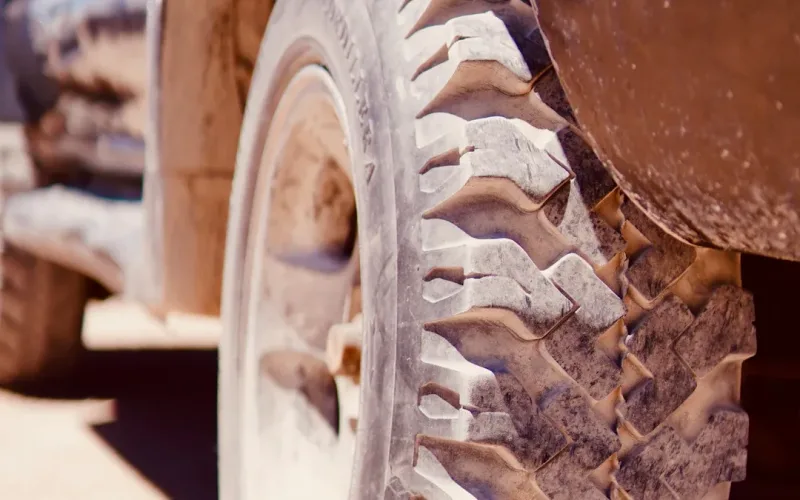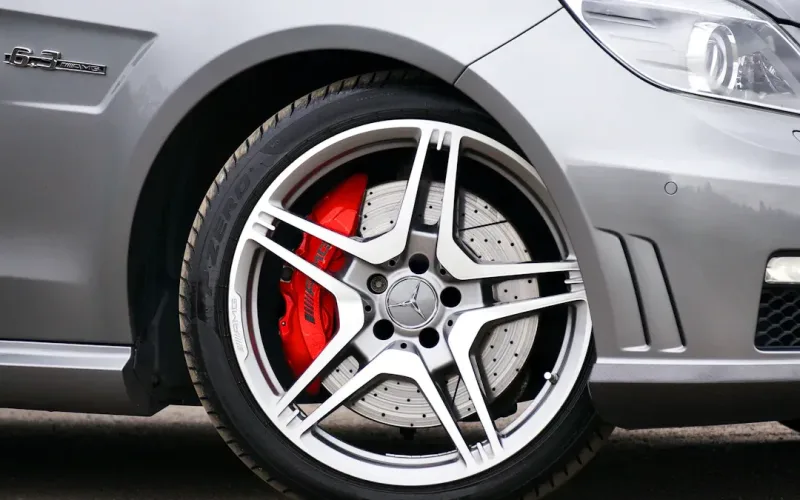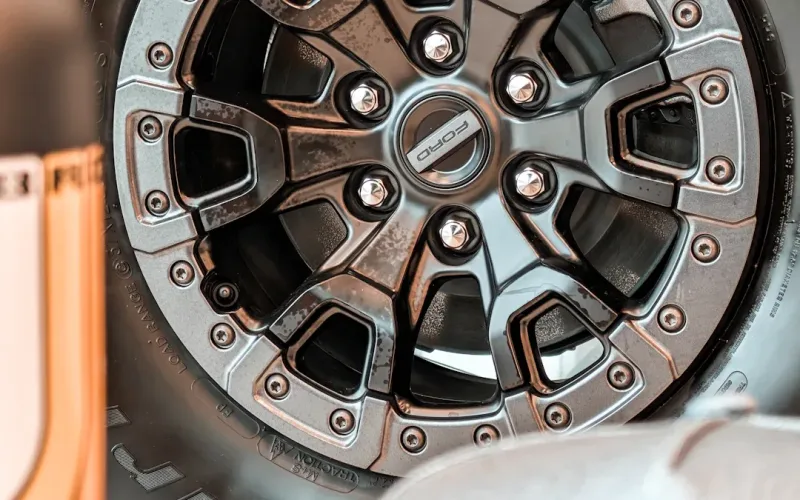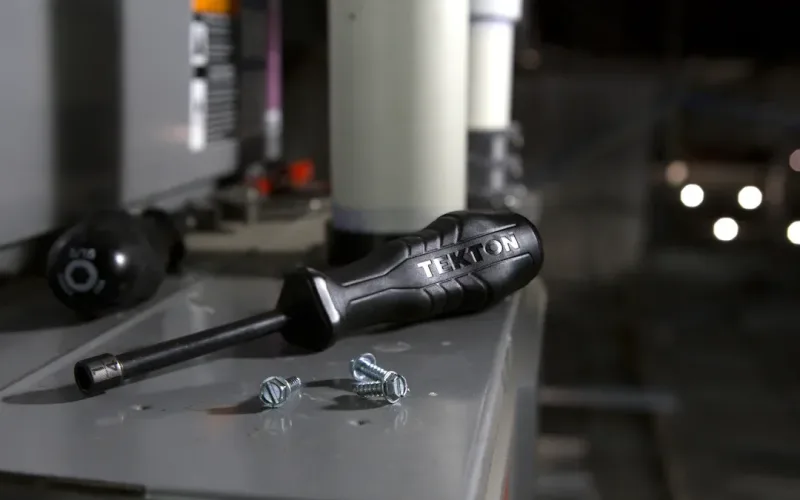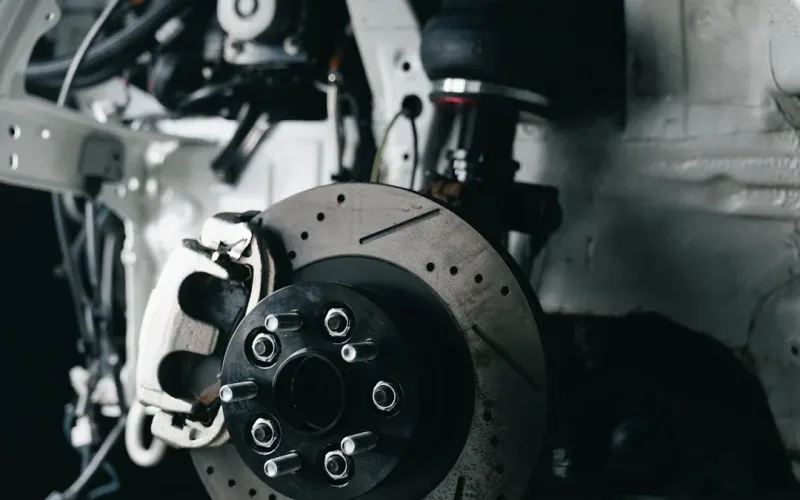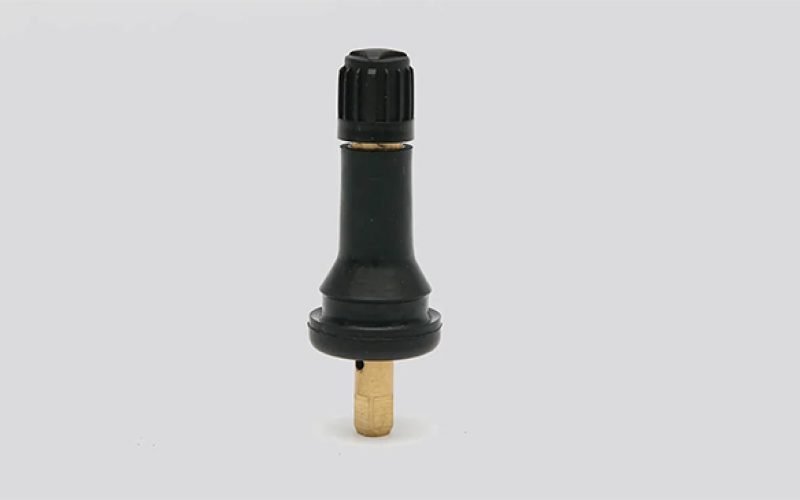

admin1
October 16, 2025
Locking Lug Nut Socket A Buyer’s Guide for Every Driver

Losing the key for your locking lug nuts is a common problem. Your first step is to find the original locking lug nut key or its identification code.
Pro Tip: Thoroughly check your glove box, center console, and trunk. The key is often stored in these spots from the factory.
If it’s gone, you must identify the unique pattern on the locking lug nuts. This pattern is essential for ordering the correct locking lug nut socket from a dealership or the original manufacturer.
How to Identify Your Locking Lug Nuts

Finding the right replacement starts with correctly identifying your locking lug nuts. This process is simple when you know what to look for. You can determine the exact type on your vehicle with a few key steps.
Check for the Original Key or ID Code
Your first and most important task is to search for the original key. The manufacturer often provides a small case for the key and its documentation.
Where to Look First 🕵️
- Glove Compartment: This is the most common storage spot.
- Center Console: Check inside all compartments.
- Trunk: Look in the spare tire well or side storage pockets.
- Owner’s Manual: Sometimes the ID code card is tucked inside the manual’s sleeve.
This documentation usually contains an ID code. You can use this code to order a new locking lug nut socket directly. Finding this code will save you a lot of time and effort.
Identify the Pattern Without the Key
You must identify the pattern on the lug nut itself if the key and code are lost. The unique shape on the head of the locking lug nut acts as the lock. Take a clear, well-lit, and close-up photo of the pattern. This image will be your reference. Different manufacturers use various locking lug nut patterns to enhance vehicle security.
Most locking wheel nuts fall into one of these categories:
- Keyed Head: This is the most common type. It has a unique pattern on the head that matches a specific socket or key.
- Spinning Collar: This design offers higher security. It features a free-spinning outer ring that prevents thieves from using standard removal tools.
- Shear Head: This is the least common type. The head is designed to shear off if any tool besides the correct key is used, making it a strong theft deterrent.
OEM vs. Aftermarket Locks
Next, you need to determine if your locks are Original Equipment Manufacturer (OEM) or aftermarket. OEM locks are installed at the factory by your car’s manufacturer. Aftermarket locks are purchased separately from companies specializing in wheel accessories. Knowing the difference helps you find the right supplier.
Aftermarket parts offer more variety in lug nut style and materials. For example, many aftermarket wheel lug nuts come in different colors and finishes like chrome or black. Some use materials like lightweight alloys, while strong steel remains a popular choice for both OEM and aftermarket locks. Reputable aftermarket brands like McGard and Gorilla are known for their quality and durability.
This table highlights some key differences:
| Feature | OEM Locking Lug Nuts | Aftermarket Locking Lug Nuts |
|---|---|---|
| Appearance | Usually matches the other standard lug nuts. | Offers a wide variety of colors and styles. |
| Contact Area | Often has a larger seating surface. | May have a smaller seating surface. |
| Security | Standard keyed patterns. | Some have advanced spline grooves for extra security. |
Ultimately, both OEM and aftermarket locking wheel nuts protect your wheels. Identifying which type you have simply narrows down your search for a replacement.
Finding the Right Locking Lug Nut Socket
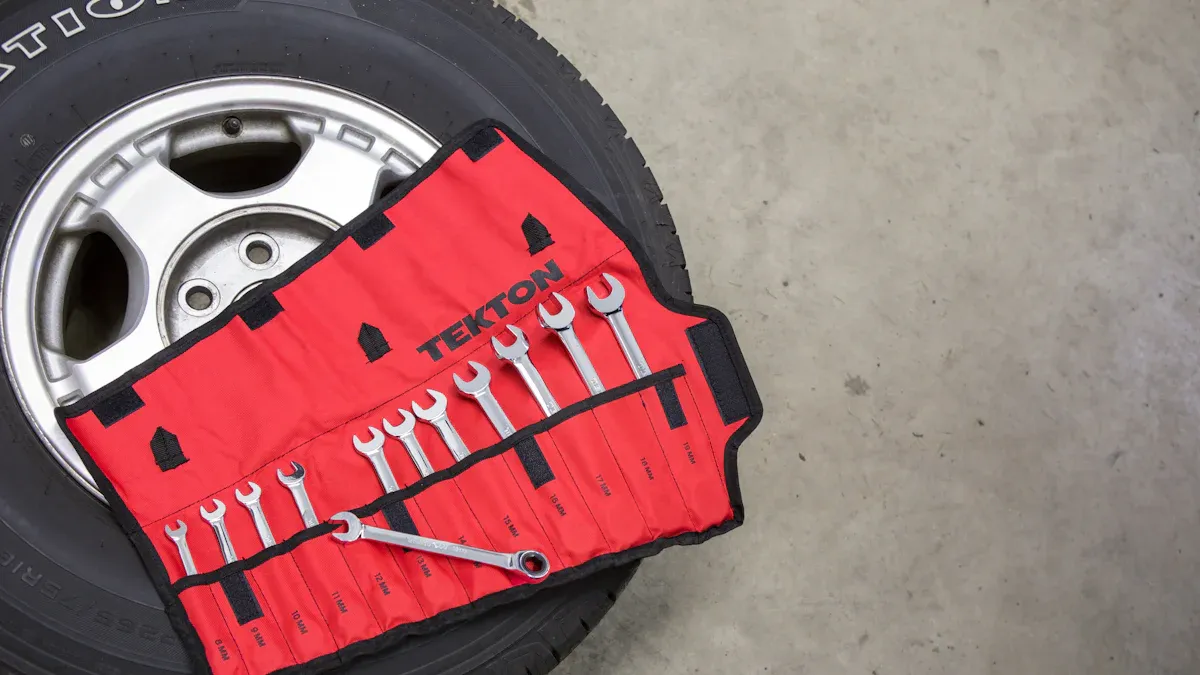
Once you identify your locks, the next step is to find the correct replacement key. You have several reliable methods to locate the exact locking lug nut socket you need. Your approach will depend on whether your locks are OEM or aftermarket.
Using Your VIN at a Dealership
Your local car dealership can be a great resource, especially for OEM locking wheel nuts. The parts department has access to tools and information specific to your vehicle’s make and model. You can bring your vehicle directly to them. A technician can often identify the correct key.
I lost a key one time… I simply took the vehicle to a Honda dealership and they came out with a set of the different lock keys… he simply tried each one until he got a match, then looked at the code number and sold me a new one out of the parts department. As long as it was a Honda OEM lock, you should meet with the same success as I did.
However, this method is not always foolproof. Your Vehicle Identification Number (VIN) is most useful for parts installed at the factory. Many dealerships install aftermarket locking lug nuts as an add-on. These parts are not tied to your vehicle’s VIN.
Ok guys so when to the honda dealership, aaand no help at all, they couldn’t figure out what the part number it was, as someone mentioned it is not a honda factory part, even do it was put on at the dealership when the car was new.
In these cases, the dealership may not be able to help. Your VIN is useless for non-factory items. Always confirm if your locking lug nuts are genuine OEM parts before relying solely on a dealership.
Matching the Pattern to Manufacturer Catalogs
You can often find a replacement by matching your pattern to an online catalog if you have aftermarket locks. Companies specializing in wheel accessories provide resources to help customers. You will need the clear photo you took of your locking wheel nuts. You also need to know your vehicle’s correct thread size and lug nut style.
Many manufacturers offer online guides to simplify your search. For example, leading brands provide tools directly on their websites.
- McGard offers a ‘Vehicle Application Guide’ on their website to help consumers match lug nut patterns.
- Another ‘Vehicle Application Guide’ is available on McGard’s main automotive site for matching your specific locking lug nuts.
These guides let you compare your pattern to their available keys. You must also verify the thread size to ensure the new key will fit properly. This method empowers you to order the correct part directly from home.
Using a Professional Master Key Set
What if you cannot identify the pattern or find a match? A professional master key set is another option. Mechanics and tire shops use these kits to remove various types of security lug nuts. A comprehensive master key set includes multiple keys for most aftermarket locking lug nuts. These kits are available for purchase and typically cost around $89.99.
This solution is ideal for someone who frequently works on different vehicles. For a single-use situation, the cost might be high. In that case, visiting a mechanic who already owns a set is more practical. If all else fails, purchasing a new locking lug nut set is a final alternative to secure your wheels.
Where to Purchase a Replacement Socket
After you identify your lug nuts, you need to find where to buy a new key. You have three main options for purchasing a replacement locking lug nut socket. Each one has its own benefits depending on your situation.
Ordering from the Manufacturer
Contacting the manufacturer directly is your best bet for aftermarket locks. Companies like McGard have a clear process for this. If you have your ID registration card, you can order a replacement key on their website. Without the card, you can call their customer service department for help.
To order by mail, you generally need to follow these steps:
- Complete the order form that came with your original set.
- Clearly write down the exact items you need.
- Include your payment information.
- Provide a daytime phone number.
You can also order by phone if you have your ID card and a credit card ready. This method ensures you get the exact key for your specific locking wheel nuts.
Buying from Auto Parts Stores
Local auto parts stores offer convenience. You might find a replacement key on the shelf, especially for more common patterns. However, their inventory can be limited. An auto parts store may not have the specific key you need, similar to how they might stock five different water pumps for one car model without knowing which one fits. You must know your lug nut’s thread size and bring a clear photo of the pattern to help the staff find a match.
Visiting a Dealership Parts Department
A dealership is the ideal place to go for OEM locks. The parts department uses your VIN to find the exact parts for your car. This system ensures you get the correct key for your vehicle’s specific wheel configuration. However, this reliance on a VIN can be a problem. If your locks were a dealer add-on and not factory-installed, the VIN will not help. Some people have found that parts managers can be unhelpful without a VIN, even for a common part. Always confirm your thread size before finalizing a purchase.
| Purchase Location | Pros | Cons |
|---|---|---|
| Dealership | VIN system ensures an exact OEM match. | Can be unhelpful for non-factory parts. |
| Auto Parts Store | Convenient for common keys. | May lack specific or less common patterns. |
What to Do If You Can’t Find a Match
Sometimes, you exhaust all options and still cannot find a matching key. In this situation, you must shift your focus from finding a key to removing the lock. You have a few effective methods for this task.
Using a Universal Removal Tool
You can try removing the locks yourself with a special tool. Universal removal tools are designed to grip and remove security lug nuts without the original key. These kits often contain reverse-threaded sockets. The sockets bite into the head of the lug nut as you turn your wrench counter-clockwise. This action provides the grip needed to loosen the lock. These are some of the common tools for removing locking lug nuts available for purchase. However, using them requires care and carries some risk.
Consulting a Tire Shop or Mechanic
Visiting a professional is your safest and most reliable option. Mechanics and tire shops have experience and specialized equipment for this exact problem. They often have master key sets that contain dozens of OEM and aftermarket keys.
Professionals also use advanced removal tools that are less likely to cause damage, such as:
- Simple Sockets: These are hammered onto the lock to create a tight grip.
- Reverse-Threaded Sockets: These grip the lock securely without hammering.
- Master Key Sets: A large collection of factory and aftermarket keys.
A technician can present you with two choices. They can remove your existing locking wheel nuts and replace them with a new set of universal locking lug nuts. Or, they can help you order a new key if the brand is identifiable.
Avoiding Damage to Your Wheels
Attempting to force a lock off can be a costly mistake. The process of removing locking lug nuts without the right equipment can easily go wrong.
Drilling too deep can ruin the wheel stud. Applying excessive force can break the stud completely. A professional has the skill to remove stubborn locking lug nuts and locking wheel nuts safely. This protects your wheels from scratches and prevents expensive repairs to the hub assembly.
Losing your key can be frustrating, but finding a solution is straightforward. Always search your vehicle first for the original key or its ID code. If it is lost, identify your locking lug nuts and take a clear photo of the pattern. Use this information to order the correct locking lug nut socket from a dealership, the manufacturer, or a trusted supplier like Fortune Auto Parts.
Final Tip: 💡 Once you get the new key, keep it and the ID code in a safe, memorable place. This simple step will prevent future problems.
FAQ
What if I damage a wheel stud during removal?
A damaged wheel stud requires professional attention. You should not drive the vehicle. A mechanic can press out the old stud and install a new one. This repair ensures your wheel remains securely attached to the vehicle’s hub assembly.
Can I just buy a new set of locking lug nuts?
Yes, you can buy a new set. First, a professional must remove the old locks. Then, you can install a new set of locking lug nuts. This is often a good solution when you cannot find a replacement key for your old locks.
How do I store my new key and ID code? 💡
You should keep the new key and its ID code in a secure place. Store the physical key in your glove box or with your spare tire tools. Take a photo of the ID code and save it on your phone or computer for easy access.
Are all locking lug nut keys unique?
Most locking lug nut keys are not entirely unique. Manufacturers produce a limited number of patterns. For example, a popular brand might have a few dozen different key patterns that they use across thousands of sets. This is why master key sets work.
